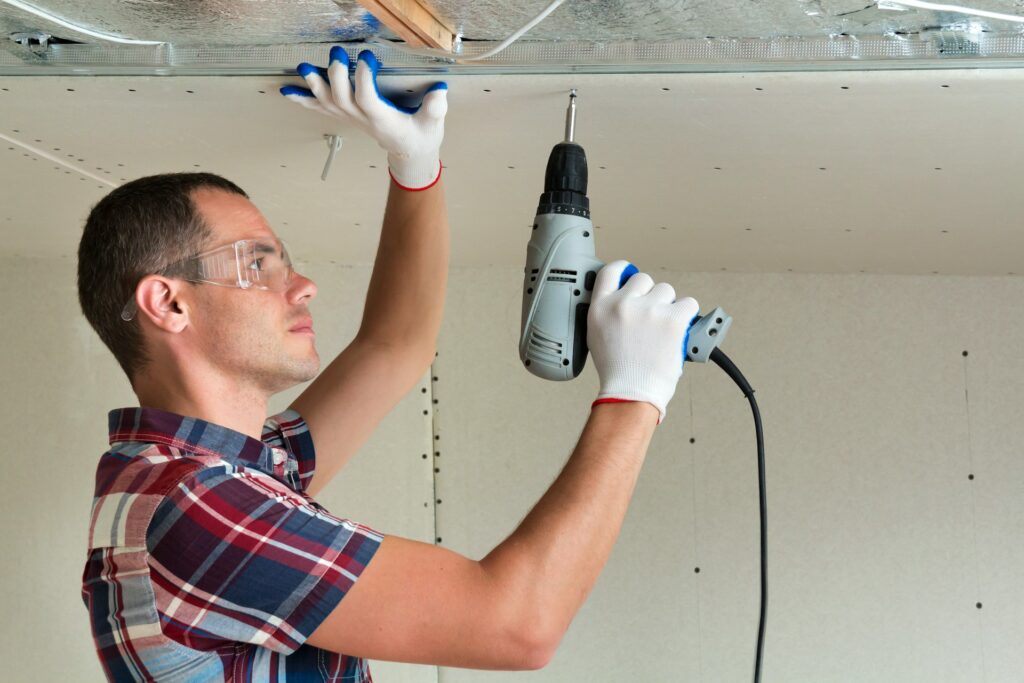Making your home energy efficient is important for saving money and increasing comfort. One key way to achieve this is by improving insulation. Good insulation helps keep your home warm in winter and cool in summer, reducing the need for excess heating and cooling. This leads to lower energy bills and a more comfortable living space.
Identify Areas in Your Home That Need Insulation
To make your home more energy-efficient, you first need to figure out where insulation is most needed. Different parts of the house can lose heat or let the cold in, affecting how comfortable your home feels. Knowing which areas to focus on helps you get the best results.
1. Attic: The attic is one of the top places that need good insulation. Heat rises, and without proper insulation, it can escape through the roof. Adding insulation here keeps the warm air inside during winter and prevents the heat from coming in during summer.
2. Walls: Both exterior and interior walls should be insulated to maintain a consistent temperature. Exterior walls face the outdoor elements directly and need more insulation than interior walls. This helps keep the cold air out in winter and the cool air in during summer.
3. Floors: Floors, especially those above unheated spaces like garages or basements, can be significant sources of heat loss. Insulating these floors helps cut down on drafts and makes the rooms above more comfortable.
4. Crawl Spaces and Basements: Crawl spaces and basements can let in cold air and moisture. Insulating these areas keeps your home warmer and also helps prevent issues like mold and dampness.
By focusing on these key areas, you can make a big difference in your home’s energy efficiency. Identifying where insulation is needed is the first step toward a more comfortable and cost-effective home.
Choose the Right Type of Insulation for Each Area
Once you know which areas need insulation, the next step is choosing the right type for each spot. Different areas of your home have different insulation needs, and using the correct type ensures the best performance.
1. Attic Insulation: For attics, you can use fiberglass batts or rolls, blown-in cellulose, and spray foam. Fiberglass is easy to install, while blown-in cellulose fills gaps better. Spray foam offers excellent sealing and high R-value, making it a great choice for maximum efficiency.
2. Wall Insulation: Exterior walls benefit from foam boards or fiberglass batts. Foam boards provide high insulation value and moisture resistance. For interior walls, fiberglass batts work well because they are easy to install between studs.
3. Floor Insulation: Floors above unheated spaces need rigid foam boards or fiberglass batts. Foam boards are moisture-resistant, making them ideal for areas like basements. Fiberglass batts can be used in crawl spaces to keep the floor warm.
4. Crawl Space and Basement Insulation: For crawl spaces and basements, use moisture-resistant materials like rigid foam boards or spray foam. These types help seal out moisture and provide good insulation against cold air.
Choosing the right type of insulation for each area not only boosts your home’s energy efficiency but also improves comfort and durability. Each type of insulation has its unique advantages, and selecting the right one ensures you get the most out of your insulating efforts.
Proper Installation Techniques for Maximum Efficiency
Proper installation is key to getting the most out of your insulation. No matter how good the material is, it won’t be effective if it’s not installed correctly. Here are some techniques to ensure maximum efficiency:
1. Sealing Gaps and Cracks: Before installing insulation, you need to seal any gaps or cracks in the walls, floors, or attic. This prevents air leaks that can reduce the insulation’s effectiveness. You can use caulk or expanding foam to seal these areas.
2. Properly Fitting Batts and Rolls: When using fiberglass batts or rolls, they should fit snugly between the studs or joists without being compressed. Compression reduces the insulation’s R-value and overall effectiveness. You should also make sure there are no gaps between batts.
3. Blown-In Insulation: For blown-in cellulose or fiberglass, it’s important to achieve even coverage. This type of insulation should fill all corners and spaces without leaving any voids. Using a professional machine ensures that the material is distributed evenly.
4. Spray Foam Application: When applying spray foam, even coverage is crucial. Spray foam expands to fill gaps and should be applied in layers if necessary. Professional installation is often recommended to achieve the best results and to avoid over-application.
5. Protective Barriers: In areas prone to moisture, adding vapor barriers can help protect insulation from getting wet. Wet insulation loses its effectiveness and can lead to mold and other issues.
Using these techniques ensures that your insulation performs at its best, maximizing energy efficiency and comfort in your home.
Maintenance Tips to Keep Insulation Effective
Maintaining insulation is important for keeping your home energy-efficient over time. Without proper upkeep, insulation can lose its effectiveness. Here are some tips to help keep your insulation performing well:
1. Regular Inspections: It’s a good idea to check your insulation regularly. Look for signs of damage, moisture, or pests. In the attic, make sure there are no gaps or areas where the insulation has shifted.
2. Addressing Moisture Issues: Moisture can severely reduce the effectiveness of insulation. Make sure there are no leaks in the roof or walls. Use dehumidifiers in areas like basements and crawl spaces to keep humidity levels low.
3. Adding More Insulation: Over time, some insulation types can settle and lose their efficiency. Adding more insulation on top of the existing material can help restore its effectiveness. This is especially true for loose-fill insulation like cellulose.
4. Replacing Damaged Insulation: If you find any damaged or moldy insulation, it’s essential to replace it promptly. Moldy insulation can harm indoor air quality and health. Remove the damaged sections and replace them with new insulation.
5. Pest Control: Pests like rodents can damage insulation by creating nests and tunnels. Keep an eye out for signs of pests and address any issues quickly. Seal entry points and consider using pest-resistant insulation materials.
By following these maintenance tips, you can ensure that your insulation remains effective, keeping your energy costs low and your home comfortable.
Conclusion
Whether you’re dealing with an old house that needs upgrading or a new home where you want to start off right, proper insulation is key. By taking these steps, you can create a more energy-efficient and comfortable living environment for yourself and your family.
For expert advice and professional insulation services, look no further than All Thermo. Our team is here to help you make the best choices for your home’s insulation needs. Contact us today to get started!

